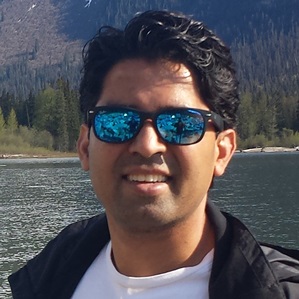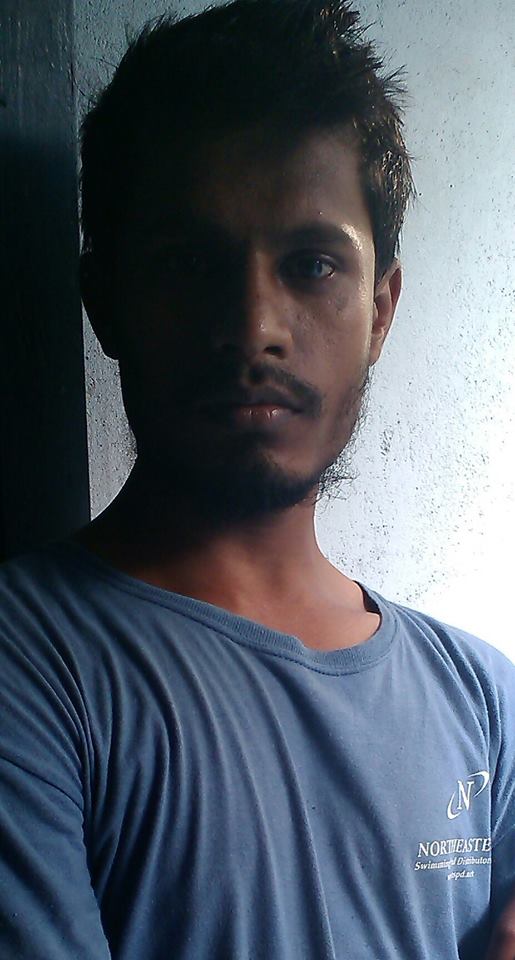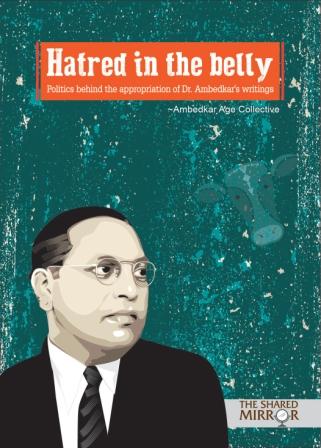Wesly Kumar
 Even though the Indian constitution has many safeguards and provisions, the Dalits are still being discriminated against, and excluded in the universities. The Protection of Civil Rights Act, 1955, and the SC/ST (Prevention of Atrocities) Act, 1989, prescribe punishments for crimes against Dalits that are much more stringent than corresponding offences under the IPC. Special courts have been established in major states for speedy trial of cases registered exclusively under these Acts. In December 2015, the SC and ST (Prevention of Atrocities) Amendment Bill, passed by Parliament, made several critical changes. New activities are added to the list of offences. Among them are prevention of Dalits from using common property resources, from entering any places of public worship, and from entering into educational institutions such as universities .
Even though the Indian constitution has many safeguards and provisions, the Dalits are still being discriminated against, and excluded in the universities. The Protection of Civil Rights Act, 1955, and the SC/ST (Prevention of Atrocities) Act, 1989, prescribe punishments for crimes against Dalits that are much more stringent than corresponding offences under the IPC. Special courts have been established in major states for speedy trial of cases registered exclusively under these Acts. In December 2015, the SC and ST (Prevention of Atrocities) Amendment Bill, passed by Parliament, made several critical changes. New activities are added to the list of offences. Among them are prevention of Dalits from using common property resources, from entering any places of public worship, and from entering into educational institutions such as universities .
Dalit students face discrimination from the very beginning of their educational journey. At the University level, discrimination is not as blatant as in primary schools. However it is occurring on a daily basis. Only 4 per cent of them are fighting against a system that seems to be structured against them. The students from Dalit communities who do strive to break into the competitive educational system, are squeezed out through violent caste discrimination, and caste prejudice is pushing some of the most exploited to take their own lives. But the tenacity and resilience of Dalit communities cannot be underestimated. There couldn’t be a more opportune time to realise the message of visionary Dalit leader Ambedkar, who called upon Dalits to educate, agitate and organise. In a society where students have waged massive struggles to ensure their right to access higher educational institutions through the protective, enabling concept of the reservation policy, no one has dared to shed light on how many of these students are allowed to leave these institutions with degrees, how many become dropouts, become permanent victims of depression, how many end up in death.
Caste is not simply a law and order problem but a social problem in the universities. There is a notion that universities are caste neutral. However, casteism comes across as an attitude problem, either from heads of the departments or from the heads of the institutions or from the management. Usually the determinants of caste can be read through language, command over English, submissiveness, articulation, mode of dress and complexion. While most students overlook the bigotry of individuals, others are driven to the edge in the face of systemic ridicule. Most non-Dalits look down on them as sub-humans, and often taunt, humiliate and victimize them. It is also a fact that even the Dalit employees are also being targeted for discrimination in the university system, but they are suffering silently. There are a number of reports on the experiences of the Dalit employees revealing that discrimination is prevalent for the reason that the majority of the officers come from high castes and they are intoxicated with superiority. The studies on caste discrimination reveals the cases of discrimination. The Dalit employees are being denied promotion on scheduled time. They are being transferred to remote places. They have to suffer snide remarks besides experiencing harassment and mental torture. They are subjects for spoiling of confidential reports, blocking or delaying promotions, or giving it to the juniors among higher castes, transfers, extension of probation, not providing basic facilities, assigning tasks below the designation, posting in insignificant places other than administration departments are some of the instances. The non-teaching staff face an unwritten threat. Anyone who questions discrimination will be shifted from the administration.
In India at present, education has become a disciplining enterprise against Dalit students. They are under threat of rustication; expulsion; defamation and discontinuation.The Dalits in the universities currently face a unique challenge: assertion by the Dalits for their dignity and constitutional rights often leads to conflict and entrenched groups resorting to violence. Denial of dignity and equality is common across the country. Ten-twelve years ago, caste discrimination was very overt, now it is invisible but omnipresent.
In universities most of the Dalit students do not receive support from other students and teachers. Examiners ask about their caste background. The teachers do not give them the marks they deserve in exams, and their papers were not evaluated properly. Many students are humiliated by examiners in practical and oral examinations. This is a systemic persecution of Dalit students in Indian universities. They are often failed by their teachers deliberately. The Dalit students generally tend to give up to the academic pressure, because they feel that they cannot compete with non-Dalits. There is a general notion among everyone that Dalits cannot do well academically and gain admission through reservation. In the universities and colleges people often comment that there are no jobs except for Dalits. This reflects caste grudge against them. They comment that the educated Dalits can never be like us and they lack intelligence. Therefore the Dalits are always under a psychological pressure because of suspicion in their minds. Even though the Dalit students require a lot of moral support, it is lacking because neither teachers nor non teachers give a damn about them. Hence they tend to join a group with only those who are from their region or community. This makes the problem even worse. In a society where students have waged massive struggles to ensure their right to access higher educational institutions through the protective, enabling concept of the reservation policy, no one has dared to shed light on how many of these students are allowed to leave these institutions with degrees, how many become dropouts, become permanent victims of depression and how many end up dead.
Many Dalit students who get into universities through affirmative action of reservation or merit demand justice. Most of them are first generation graduates, coming from poor families. When they are unable to digest the discrimination and exclusion and do not get justice, they are forced to take the drastic step of suicide. Suicide of a Dalit is an outcome of the caste system and it deprives the Dalit of opportunities in his career. .
According to the National Crime Records Bureau (NCRB) report in 2014, in India, 20 students kill themselves every day. Suicide is a bigger evil in society than most people comprehend it to be. The causes for suicide have been attributed to various psychological, biological and environmental factors. Strong correlation between low educational achievement, poor performance in examination, stress and suicide attempts among students have been identified globally. However, it is also be noted that the reasons for the distress among students have been identified as – the impact of recession, financial problems, family problems, social exclusion and caste discrimination. The studies show that the Dalit students are reporting higher suicides compared to others. The context behind these suicides is failure, the fear of failure, administrative indifference, hostile regulations, insult, social and academic stigmatisation and rejection.
The influence of Ambedkar has gone far beyond the Dalit students in the universities. It is fast spreading among students and others across caste, class, gender, region and other divides. They are taking in increasingly assertive forms. With limited development and welfare measures, Dalits have made some progress. On entry into the universities, they wanted to change the upper castes mindset. Their entry into the universities threatens the upper caste elite who oppose the children of laborers and bonded-laborers, denizens of remote plateaus, and providers of services who aspire to become their equals. They do everything to undermine and reverse the rationalist, egalitarian, humanist path of equality and advancement for the Dalits. When Dalits are transferred to a higher educational institution, it leads to mistreatment and make these institutions oppressive for them. If they protest, they are taught a lesson through harsh punitive measures such as expulsion from hostels and other common places, stoppage of stipends and other similar steps.
Here is the list of the Dalit students who have committed suicide in four years (2007-11). This is by no means an exhaustive list but covers only those cases which we were documented and where parents and relatives had raised their voices and accused the institutions of caste discrimination against their children that led to their suicides. The actual numbers of Dalit students committing suicide in country’s premier institutions will be much higher.
• M. Shrikant, final year, B.Tech, IIT Bombay, 1st Jan 07
• Ajay S. Chandra, integrated PhD, Indian Institute of Sciences (IISc), Bangalore – 26 Aug, 07
• Jaspreet Singh, final year MBBS, Government Medical College, Chandigarh, 27 Jan 08.
• Senthil Kumar, PHD, School of Physics, University of Hyderabad – 23 Feb 08
• Prashant Kureel, first year, B.Tech, IIT Kanpur, 19 April, 08
• G. Suman, final year, M.Tech, IIT Kanpur, 2nd Jan, 09
• Ankita Veghda, first year, BSc Nursing, Singhi Institute of Nursing, Ahmedabad, 20 April, 09
• D Syam Kumar, first year B.Tech, Sarojini Institute of Engineering and Technology, Vijayawada, 13 Aug, 09
• S. Amravathi, national level young woman boxer, Centre of Excellence, Sports Authority of Andhra Pradesh, Hyderabad, 4th Nov, 09
• Bandi Anusha, B.Com final year, Villa Mary College, Hyderabad, 5th Nov, 09
• Pushpanjali Poorty, first year, MBA, Visvesvaraiah Technological University, Bangalore, 30th Jan, 10
• Sushil Kumar, final year MBBS, Chattrapati Shahuji Maharaj Medical University (formerly KGMC), Lucknow, 31 Jan, 10.
• Balmukund Bharti, final year MBBS, All India Institute of Medical Sciences (AIIMS), New Delhi, 3rd March, 10
• JK Ramesh, second year, BSc, University of Agricultural Sciences, Bangalore, 1st July, 10
• Madhuri Sale, final year B.Tech, IIT Kanpur, 17th November, 10
• G. Varalakshmi, B.Tech first year, Vignan Engineering College, Hyderabad, 30 Jan, 2011
• Manish Kumar, IIIrd Year B.Tech, IIT Roorkee, 13 Feb, 11
• Linesh Mohan Gawle, PhD, National Institute of Immunology, New Delhi, 16 April, 11
Social profile of students who died across Hyderabad indicates they belong to marginalized social backgrounds and their marginalisation relates to the caste. For instance, Pulyala Raju committed suicide in March 2013. Aged 21 years, he was a student of 8th semester of the Integrated MA Linguistics at the University of Hyderabad and belonged to a Scheduled Caste. He was from Warangal district and his father was a mine worker. Raju was the first to enter university in his family. After he cleared the courses in six semesters, he got detained in four courses in the seventh semester. At the time of his death, he was uncertain and anxious about his next semester registration.
Mudasir Kamran, a Kashmiri student of English and Foreign Languages University committed suicide in 2013. At the time of his death, he was writing his PhD thesis in the Department of English Language Teaching. He was distraught about being taken to the police station over a quarrel with a fellow student.
Rajitha committed suicide in 2011. She was a 1st year student of MA Political Science in Osmania University. She came from a Scheduled Caste agricultural family. Her ambition was to join the Police Department.
Senthil Kumar died in the year 2008. Senthil Kumar, pursuing PhD in Physics at Hyderabad Central University, was from a Panniandi (pig-rearing caste) family in Tamil Nadu. His parents were agricultural workers. He was worried about failing in the exams, finding a supervisor at the end of first year and about his scholarship (part of which he sent home regularly) being discontinued.
Malleshwari, aged 21 years, committed suicide in the year 2007. She was studying B Tech in the College of Technology, Osmania University. She was from a poor backward caste family in Nellore district of Andhra Pradesh. After getting detained in her first and second semesters with 50% backlogs, she committed suicide.
Madari Venkatesh, a third year PhD scholar at the University of Hyderabad took the extreme step on November 24 that year. Hailing from a Dalit family in Ibrahimpatnam, Andhra Pradesh, Venkatesh too fell victim to caste discrimination. He was not provided a guide and a lab, even after three years, even when other students started their researches, and published international papers.
Mr Vemula, born of a father who works as a security guard and a mother who’s a tailor – and often struggling to fit in. he was excluded from eating at the hostel for the last few days of his life. The university excluded him from shelter and food.
A Dalit who was a chemistry student in the University of Hyderabad reveals the experiences of casteism within the hallowed premises of the University. His father was a retired school teacher when he joined the University and his mother was a homemaker. His dad was to receive Rs.2,800 as pension every month. With this he had to take care of his elder brother, sister and himself. At that time, the monthly mess fee was around 900 rupees and the government gave a scholarship which included Rs.550 per month toward mess fees. How could he make up the remaining Rs.350? Most of us never got money from home, he said. Being a poor Dalit is not easy to be in the universities. He never got even hundred rupees from home. There was no money to buy toothpaste or soap. Other students were spending lavishly. The Dalit were subjected to harassment and teasing due to extreme poverty and many Dalit students couldnot go home during vacations and they would stay on to study at the hostels.
Some eight years ago, Apoorvanand of Delhi University, had gone to Delhi’s All India Institute of Medical Sciences, India’s leading medical school, to investigate a case of discrimination against a Dalit student. He found vile abuses written on the doors and walls of hostel rooms where Dalit students lived. However the Director of the institute denied the caste discrimination on the campus.
Universities are also yet to acknowledge the need to change the prevailing academic culture of the university and to engage to adapt student needs. The merit of the students reaching the portals of the university despite all adversity is unrecognized and see them as a backward burden on the university system. But many of the students made their way into the universities through merit and reservations and supported by national fellowships, drop out from their life. Because they were discriminated and excluded, unfairly treated, harassed by norms and regulations imposed intentionally.
The University Grants Commission has issued directions to prevent the caste based discrimination higher educational institutions. In its letter dated 198.7.2001, 2.7.2013 and 1.3.2016 it states clearly that the Officials/ faculty members should desist from any act of discrimination against Dalit students and ensure that no one indulged in discrimination. Further, it directed them to develop a page on the institute’s website to lodge complaints in this regard.
During 2007, Prof. Thorat committee revealed that the Dalit students in All India Institute of Medical Sciences are facing discrimination and its teachers are inaccessible and indifferent towards them. Even the committees constituted in other universities highlighted glaring instances of insensitivity and lack of diligence, especially towards students from marginalised sections of society and directed the universities to show greater alacrity in setting up and adequately monitoring the mechanisms for making the campus a more inclusive and rewarding experience for Dalit students. However, none of the recommendations were ever implemented.
Further, the Andhra Pradesh High Court by its order dated 1-07-2013 directed all the universities to take measures to address the possible causes, and yet until today, there is no implementation or improvement. Unfortunately, the Vice-chancellors and university administrators believe they are accountable to their appointing authorities, whereas actual accountability is to students, employees and beyond, to society. An assertive Dalit is often seen as an obstacle by the mainstream of society. In many areas, assertive Dalits are harassed, tortured, excluded, violated, mutilated and killed. Although criminal cases are registered, the culprits often manage to escape punishment because of political contacts. Structural interaction between the rural and urban power structures and the bureaucracy at all levels prevents effective delivery of social justice. The consequences of the social exclusion for Dalits are more serious as this has developed in to psychological problems and a sense of insecurity among them. In the interest of Dalit students and employees, it is necessary that universities should learn the lessons from the incidents and address the issues accordingly.
~~~
Wesly Kumar Vipparthi is working as an Asst. Registrar at University of Hyderabad and is also pursuing PhD simultaneously from the same university under the supervision of Prof. N. Sudhakar Rao and Dr. Sripathi Ramudu in the area of social exclusion, education and Dalits. He worked on discrimination against dalits in educational institutions, during his M.Phil.










